
A prominent research firm, Cognizance Market Research added a cutting-edge industry report on the “Global Climate Change Mitigation Market”. The report studies the current and past growth trends and opportunities for the market to gain valuable insights during the forecast period from 2023 to 2032.
Global AI in Climate Change Mitigation Market Analysis:
According to cognizance market research, the global AI in Climate Change Mitigation market was valued at US$ 14.60 Billion in 2023 and is anticipated to reach US$ 56.90 Billion by the end of 2032 with a CAGR of 16.3% from 2023 to 2032.

What is the Global AI in the Climate Change Mitigation Market?
The Global AI in Climate Change Mitigation Market is centered on the utilization of AI to address climate change and reduce its impact with the help of an application of data analysis. Artificial Intelligence is used to analyze and control energy consumption, measure carbon footprint, and improve the utilization of renewable power sources. This market plays an important role in solving environmental needs through facilitating industrial practices that are environmentally friendly and support global climate change initiatives.
Climate change is an area where AI can be used in many different ways – for instance in smart Grids and energy optimization, in precision agriculture in waste management, and more. These technologies enable forecasting of various climate conditions, evaluation of climate change impact, and guidance on environmental protection and carbon footprint. It is backed by expanding interest in environmentally friendly technologies, recyclable policies by governments, and the global consciousness regarding climate change.
The market is steadily growing because of development in AI technology as well as the increased need for practical approaches to climate change. Many companies and technology startups dealing with AI are currently strengthening it through the development of different industry-specific tools, including energy, agriculture, and transport industries. Due to the increasing drive towards carbon neutrality on the global scene, the market is expected to grow particularly in areas that require stringent sustainability policies such as North America and Europe.
Global AI in Climate Change Mitigation Market Outlook:
The Global AI in Climate Change Mitigation Market will soon see impressive growth as companies around the world adopt AI-based solutions for climate change. There is greater overall awareness of environmental concerns and global trade, including the Paris Agreement, which is forcing governments and commercial enterprises worldwide to seek the use of AI to minimize carbon dioxide emissions and boost energy efficiency. This change is perceived to result in the market growth in future years.
North America and Europe are currently ahead in the market due to some of the drastic measures they have implemented towards climate change, well-developed AI framework, and large amounts of investments they have made towards green technology. These regions enjoy Government support for sustainable development and Private Sector experiment practices in the Energy, Transportation, and Agriculture sectors of Artificial Intelligence. At the same, the Asia-Pacific region seems to be growing due to industrialization and enhanced use of AI to handle issues of development and use of resources in case of urbanization.
One of the powerful drivers affecting the market trend is Technological advancements. Recent advances in machine learning, predictive analysis, and computer vision help AI systems control renewable power supplies, monitor CO2 emissions, and predict more climatic risks. All these advancements also enhance access for industries interested in procuring AI-embedded platforms right for their climate interests.
Some of the issues in the market include the high initial cost required to implement AI solutions issues to do with data privacy and the energy required to fuel the big data AI systems. However, as various challenges persist it is the increasing understanding of the long-term economic and environmental impact of AI adoption that is now seeing stakeholders embrace more sustainable technologies.
In the prospect, it is forecasted that strong cooperation between governments, private companies, and environmental NGOs will prevail in the market. Collaborations are being encouraged to build AI solutions that address unique climate change requirements like carbon capture, and the preservation of wildlife.
Segment Analysis:
The Global AI in Climate Change Mitigation Market can be divided based on component, application, end-use industry, and geographic region. By product type, the market can be segmented into hardware such as sensors and edge devices, and software ranging from machine learning algorithms to climate modeling tools and services including consulting, integration, and maintenance. The primary reason why there is a predominance of software solutions is the analytical capabilities to determine the strategies for minimizing emissions and rationalizing the use of resources. The services segment is also growing because organizations want to outsource the proper implementation of the new AI systems.
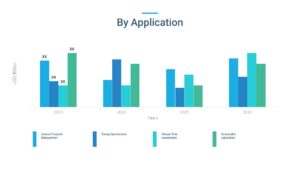
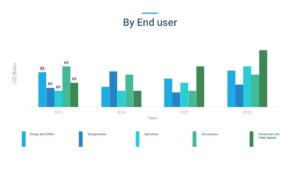
From an application perspective, the market covers carbon management, energy, climate change, sustainability in agriculture, waste, and reforestation. According to different end-use sectors, energy and utilities make the most extensive use of AI, particularly in smart grids and renewable energy systems and the agricultural and transport sectors. Regionally, North America and Europe are still the most advanced because of their regulatory support and investments focusing on AI in sustainability, even though the Asia-Pacific region is growing rapidly with increasing concerns for industrialization and urban challenges. This different segmentation shows that the market is capable of satisfying different climate change mitigation needs for different industries and geographical areas.
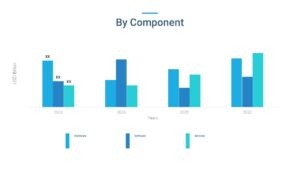

Geographical Analysis:
AI in Climate Change Mitigation adopted at the Global level enshrouds remarkable regional divergence because North American countries stand ahead of others as stated as follows: The US has a major role; in utilizing AI for enhanced renewable energy, controlling carbon emissions, and understanding climatic risks. The emphasis on clean energy and smart city projects in Canada adds to this thesis’s solidity.
Europe is one of the most demanded markets due to strict climate rules, the EU Green Deal, and the growth of artificial intelligence in the energy sector and farming. Germany and the UK are good examples of nations that are using AI to monitor carbon levels and integrate renewable energy. At the same time, an increase is observed in the Asia-Pacific region with China and India utilizing AI solutions for urbanization, management of resources, and energy efficiency with support from government-backed sustainability initiatives.
Latin America & Middle East & Africa regions are implementing the AI solution for fighting the region’s climate-related challenges. Latin America on the other hand, targets AI for purposes of biodiversity, reforestation, and agriculture to increase food production. Middle East & Africa, aims at using AI in water resource management as well as the development of renewable energy. Such regions, albeit in their infancy, have high growth prospects owing to growing concern and capital expenditure on climate technology. This regional disparity shows the awareness of the world towards the use of AI in solving challenges faced by climate change.
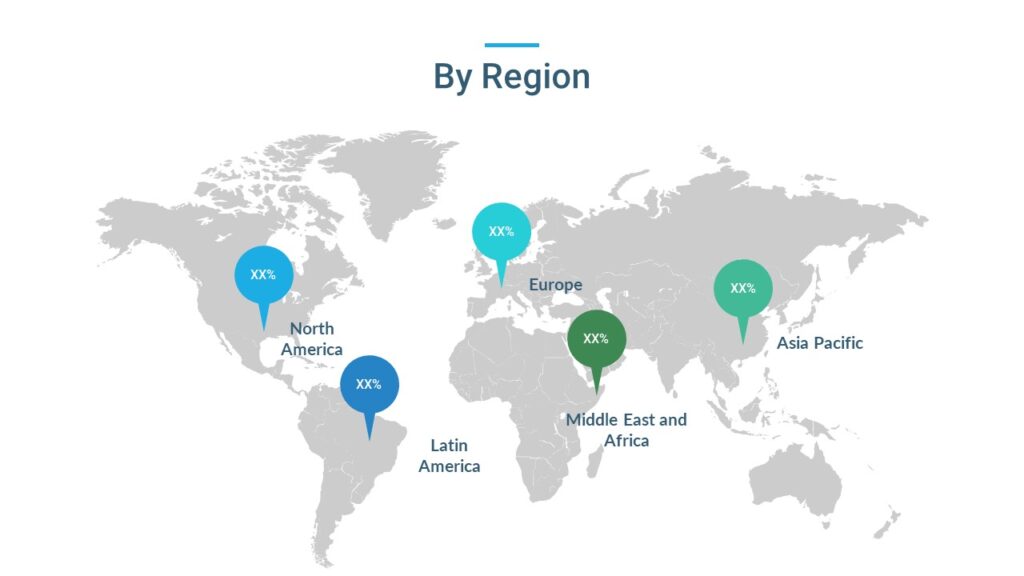
The report offers the revenue of the Global AI in Climate Change Mitigation Market for the period 2020-2032, considering 2020 to 2022 as a historical year, 2023 as the base year, and 2024 to 2032 as the forecast year. The report also provides the compound annual growth rate (CAGR) for the Global AI in Climate Change Mitigation Market for the forecast period. The Global AI in Climate Change Mitigation Market report provides insights and in-depth analysis into developments impacting enterprises and businesses on a regional and global level. The report covers the Global AI in Climate Change Mitigation Market performance in terms of revenue contribution from several segments and comprises a detailed analysis of key drivers, trends, restraints, and opportunities prompting revenue growth of the Global AI in Climate Change Mitigation Market.
The report has been prepared after wide-ranging secondary and primary research. Secondary research included internet sources, numerical data from government organizations, trade associations, and websites. Analysts have also employed an amalgamation of bottom-up and top-down approaches to study numerous phenomena in the Global AI in the Climate Change Mitigation Market. Secondary research involved a detailed analysis of significant players’ product portfolios. Literature reviews, press releases, annual reports, white papers, and relevant documents have been also studied to understand the Global AI in the Climate Change Mitigation Market. Primary research involved a great extent of research efforts, wherein experts carried out interviews telephonic as well as questioner-based with industry experts and opinion-makers.
The report includes an executive summary, along with a growth pattern of different segments included in the scope of the study. The Y-o-Y analysis with elaborate market insights has been provided in the report to comprehend the Y-o-Y trends in the Global AI in the Climate Change Mitigation Market. Additionally, the report focuses on altering competitive dynamics in the global market. These indices serve as valued tools for present market players as well as for companies interested in participating in the Global AI in Climate Change Mitigation Market. The subsequent section of the Global AI in Climate Change Mitigation Market report highlights the USPs, which include key industry events (product launch, research partnership, acquisition, etc.), technology advancements, pipeline analysis, prevalence data, and regulatory scenarios.
Global AI in Climate Change Mitigation Market Competitive Landscape:
There are several small and major firms participating in the highly fragmented Global AI in the Climate Change Mitigation Market. The new strategies formed by companies revolve around accuracy and precision. The following are some of the major market participants:
The report explores the competitive scenario of the Global AI in the Climate Change Mitigation Market. Major players working in the Global AI in Climate Change Mitigation Market have been named and profiled for unique commercial attributes. Company overview (company description, product portfolio, geographic presence, employee strength, Key management, etc.), financials, SWOT analysis, recent developments, and key strategies are some of the features of companies profiled in the Global AI in Climate Change Mitigation Market report.
Segmentation:
Global AI in Climate Change Mitigation Market, By Component:
Global AI in Climate Change Mitigation Market, By Deployment Mode:
Global AI in Climate Change Mitigation Market, By End-use Industry:
Global AI in Climate Change Mitigation Market, By Application:
Global AI in Climate Change Mitigation Market, by Region:
Research Methodology: Aspects
Market research is a crucial tool for organizations aiming to navigate the dynamic landscape of customer preferences, business trends, and competitive landscapes. At Cognizance Market Research, acknowledging the importance of robust research methodologies is vital to delivering actionable insights to our clientele. The significance of such methodologies lies in their capability to offer clarity in complexity, guiding strategic management with realistic evidence rather than speculation. Our clientele seek insights that excel superficial observations, reaching deep into the details of consumer behaviours, market dynamics, and evolving opportunities. These insights serve as the basis upon which businesses craft tailored approaches, optimize product offerings, and gain a competitive edge in an ever-growing marketplace.
The frequency of information updates is a cornerstone of our commitment to providing timely, relevant, and accurate insights. Cognizance Market Research adheres to a rigorous schedule of data collection, analysis, and distribution to ensure that our reports reflect the most current market realities. This proactive approach enables our clients to stay ahead of the curve, capitalize on emerging trends, and mitigate risks associated with outdated information.
Our research process is characterized by meticulous attention to detail and methodological rigor. It begins with a comprehensive understanding of client objectives, industry dynamics, and research scope. Leveraging a combination of primary and secondary research methodologies, we gather data from diverse sources including surveys, interviews, industry reports, and proprietary databases. Rigorous data analysis techniques are then employed to derive meaningful insights, identify patterns, and uncover actionable recommendations. Throughout the process, we remain vigilant in upholding the highest standards of data integrity, ensuring that our findings are robust, reliable, and actionable.
Key phases involved in in our research process are mentioned below:

Understanding Clients’ Objectives:
Extensive Discussions and Consultations:
Industry and Market Segment Analysis:
Target Audience Understanding:
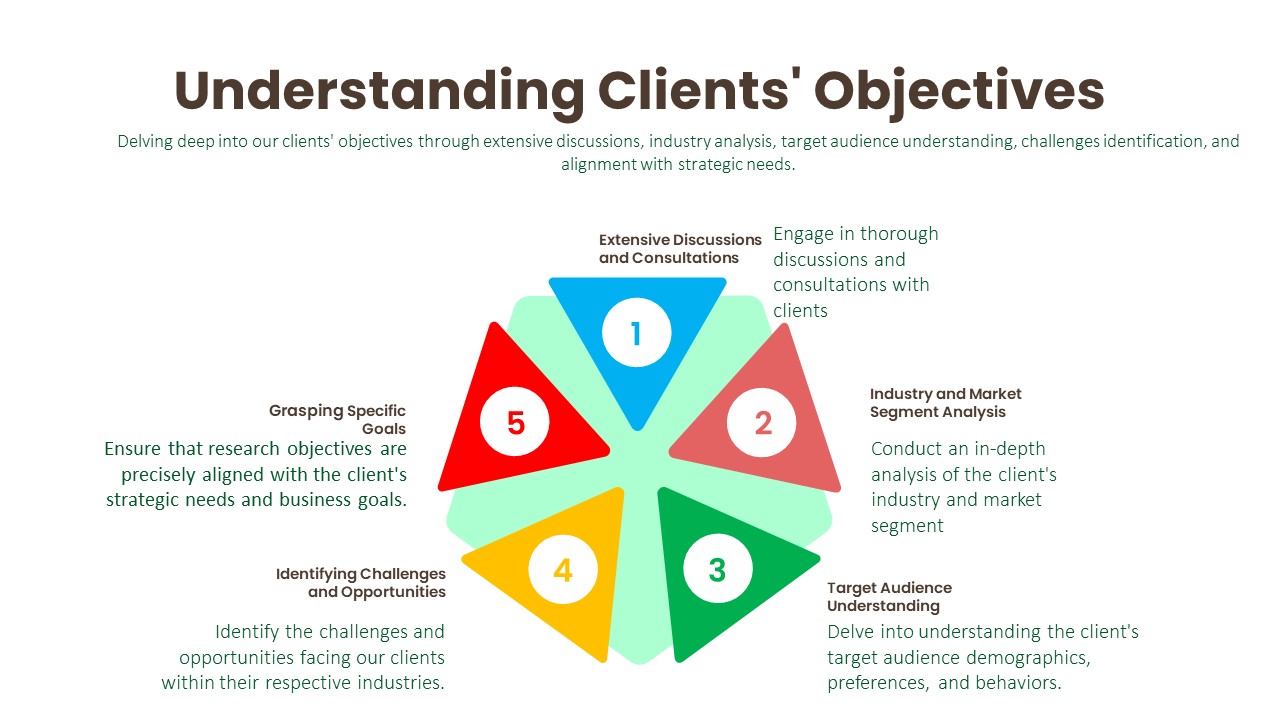
Identifying Challenges and Opportunities:
Grasping Specific Goals:
Data Collection:
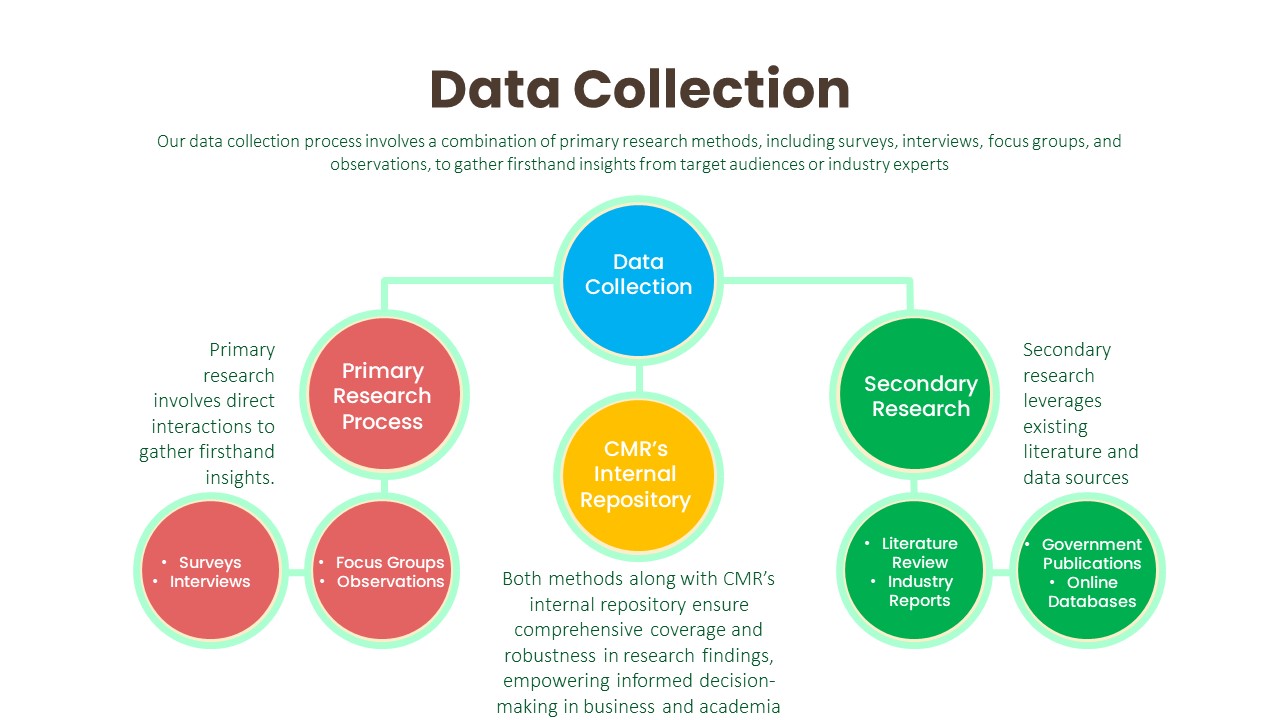
Primary Research Process:
Secondary Research Process:
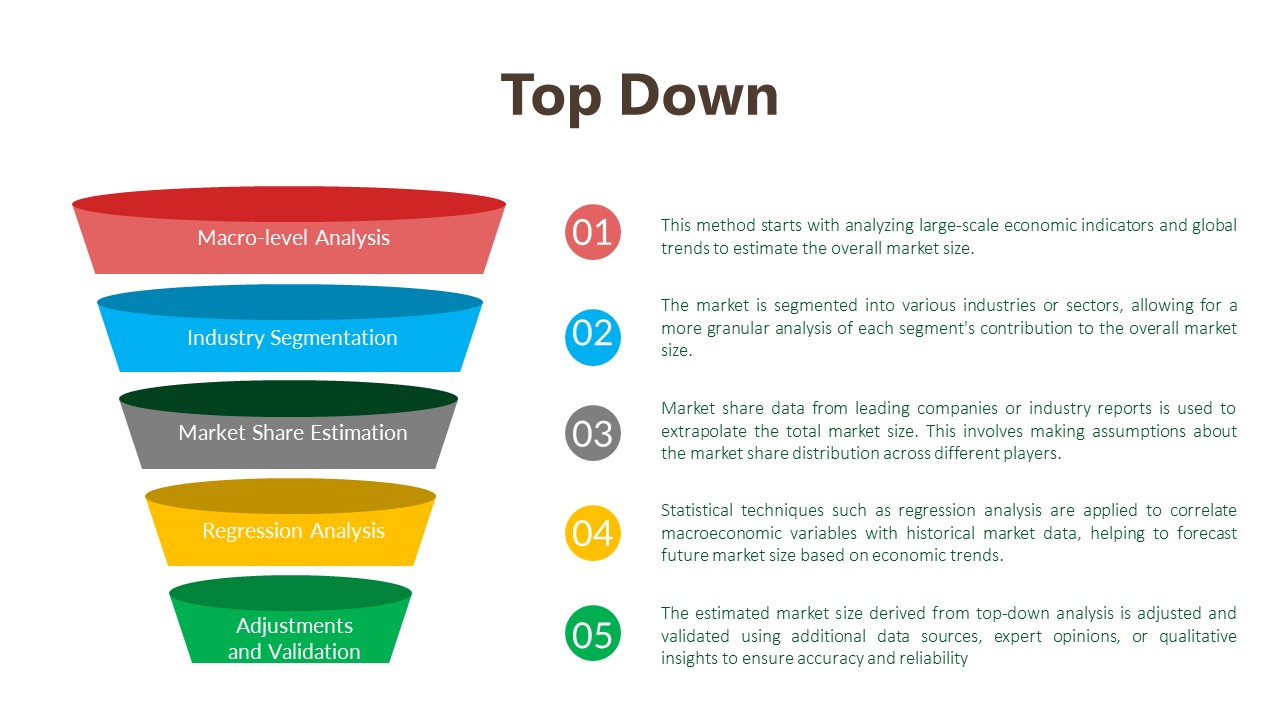
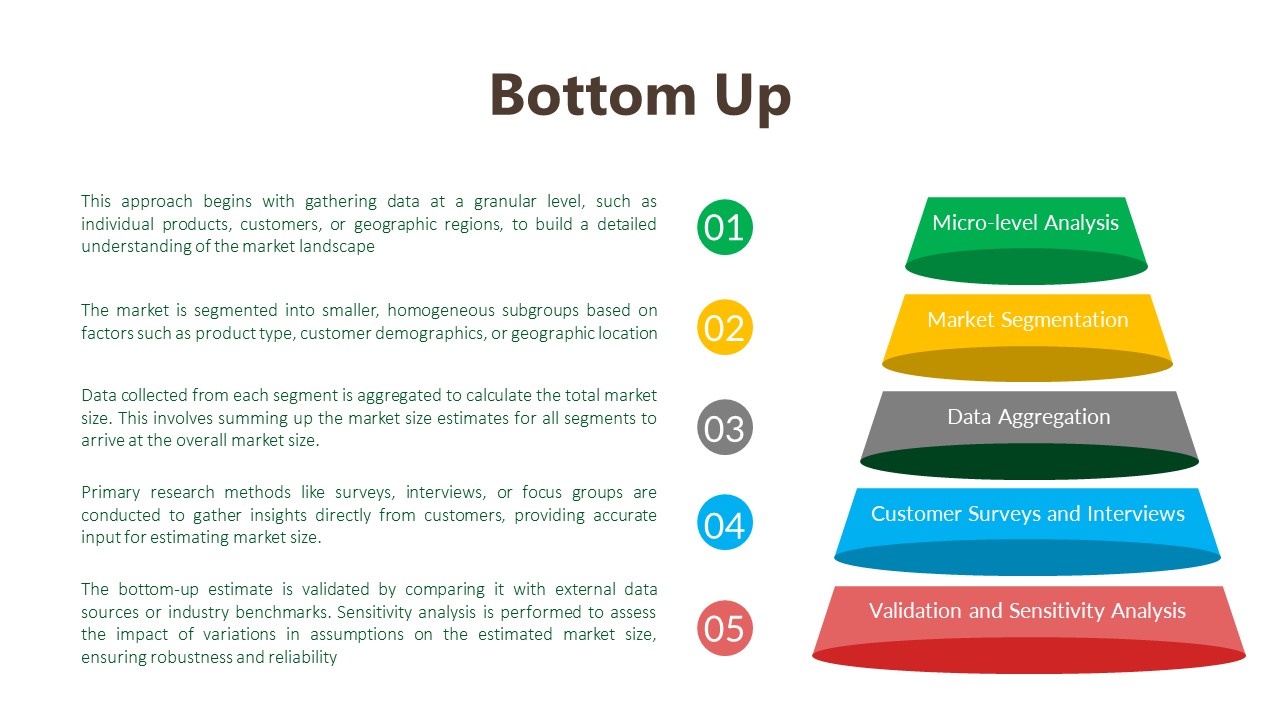
Data Analysis:
The data analysis phase serves as a critical juncture where raw data is transformed into actionable insights that inform strategic decision-making. Through the utilization of analytical methods such as statistical analysis and qualitative techniques like thematic coding, we uncover patterns, correlations, and trends within the data. By ensuring the integrity and validity of our findings, we strive to provide clients with accurate and reliable insights that accurately reflect the realities of the market landscape.

Transformation of Raw Data:
Utilization of Analytical Methods:
Statistical Analysis:
Qualitative Analysis Techniques:
Integrity and Validity Maintenance:
Data Validation:
The final phase of our research methodology is data validation, which is essential for ensuring the reliability and credibility of our findings. Validation involves scrutinizing the collected data to identify any inconsistencies, errors, or biases that may have crept in during the research process. We employ various validation techniques, including cross-referencing data from multiple sources, conducting validity checks on survey instruments, and seeking feedback from independent experts or peer reviewers. Additionally, we leverage internal quality assurance protocols to verify the accuracy and integrity of our analysis. By subjecting our findings to rigorous validation procedures, we instill confidence in our clients that the insights they receive are robust, reliable, and trustworthy.
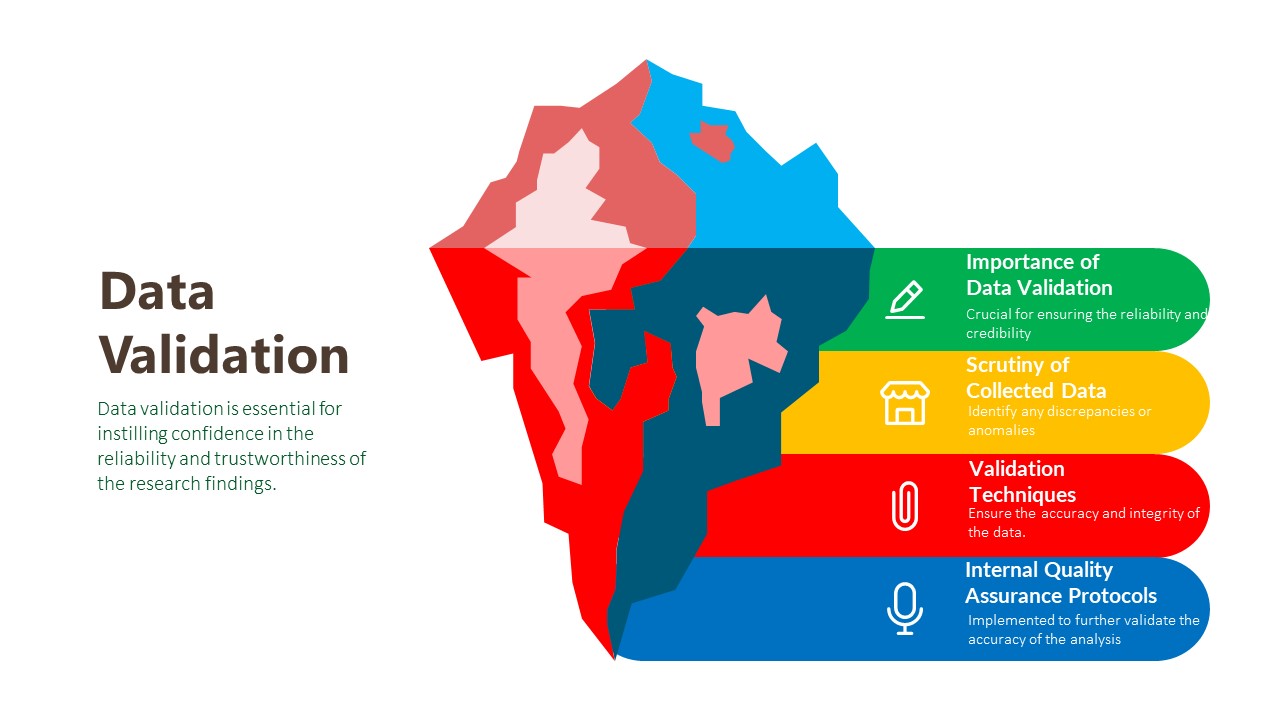
Importance of Data Validation:
Scrutiny of Collected Data:
Validation Techniques:
Internal Quality Assurance Protocols:
Report Scope:
Attribute
Description
Market Size
US$ 56.90 Billion (2032)
Compound Annual Growth Rate (CAGR)
16.3%
Base Year
2023
Forecast Period
2024-2032
Forecast Units
Value (US$ Million)
Report Coverage
Revenue Forecast, Competitive Landscape, Growth Factors, and Trends
Geographies Covered
North America, Europe, Asia Pacific, Latin America, Middle East & Africa
Countries Covered
U.S., Canada, Germany, U.K., France, Spain, Italy, Rest of Europe, Japan, China, India, Australia & New Zealand, South Korea, Rest of Asia Pacific, Brazil, Mexico, Rest of Latin America, GCC, South Africa, Rest of Middle East & Africa
Key Companies Profiled
Google, IBM Corporation, Microsoft, Tesla, Siemens, Carbon Clean Solutions, DeepMind, C3.Ai, Xpansiv, Predikto, Elemental Excelerator, Enel, Schneider Electric, Amazon Web Service, and Autogrid
It was Valued at US$ 14.60 Billion in 2023.
It is projected to reach more than US$ 56.90 Billion by 2032.
It is anticipated to be 16.3% from 2024 to 2032.
Trend: The trends burgeoning from integrating AI with IoT and big data for real-time climate measuring and insights.
Driver: Growing interest in the adoption of carbon-neutral measures and policies all over the globe.
Opportunity: Exploring further application of AI in new economies to solve new problems of urbanization and resource use.
Challenge: The implementation cost and power required to execute large-scale AI projects.
Google, IBM Corporation, Microsoft, Tesla, Siemens, Carbon Clean Solutions, DeepMind, C3.Ai, Xpansiv, Predikto, Elemental Excelerator, Enel, Schneider Electric, Amazon Web Service, and Autogrid.
We can customize every report – free of charge – including purchasing stand-alone sections or country-level reports
We help clients to procure the report or sections of the report at their budgeted price. Kindly click on the below to avail

Cognizance market research is continuously guiding customers around the globe towards strategies for transformational growth. Today, businesses have to innovate more than ever before, not just to survive, but to succeed in the future

© 2023 All rights Reserved. Cognizance Market Research